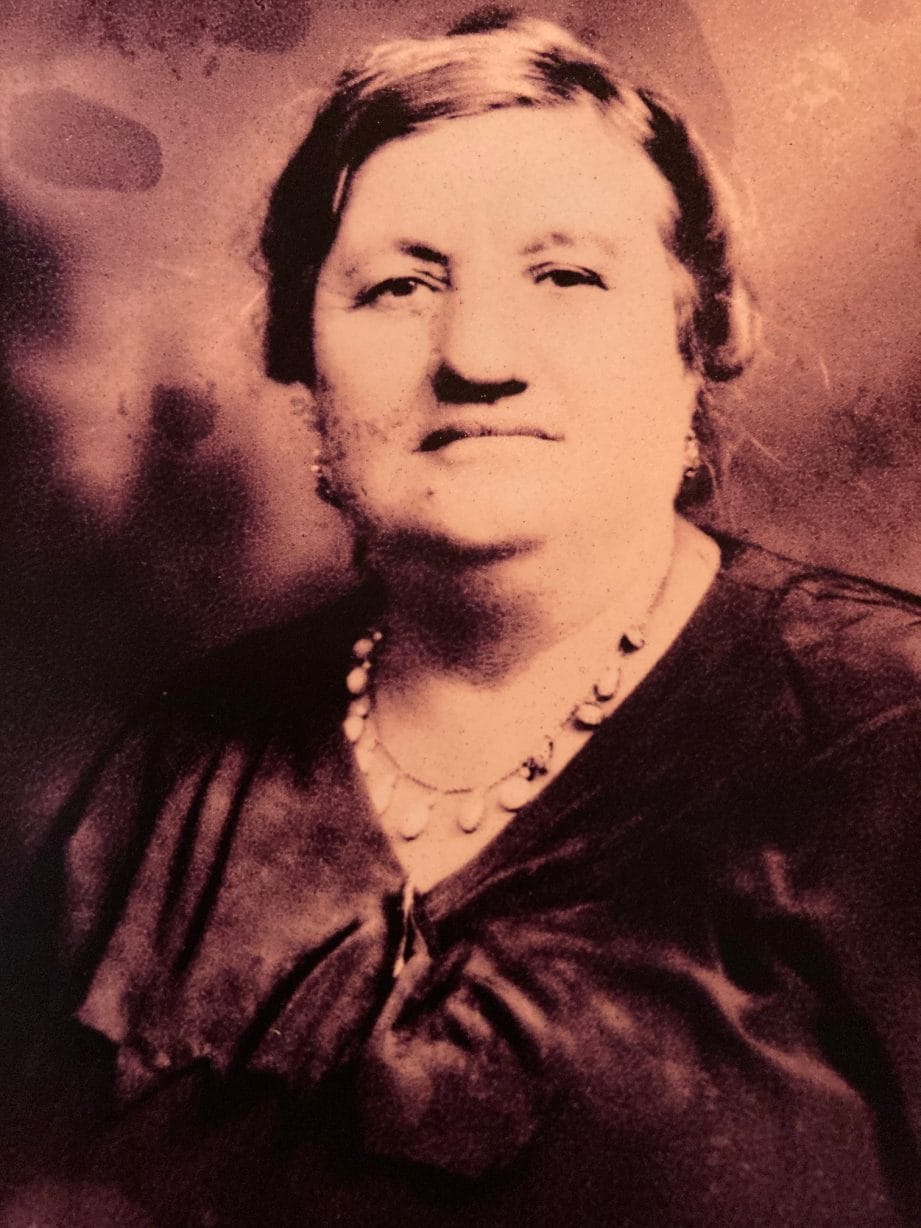A contributed perspectives piece by Anna Rose Geary
Grandmother Teresa Puca was a very determined woman. She was a Neapolitan, and all Italians knew there was no arguing with someone from Naples. It was generally believed that Neapolitans could out-cook, out-argue and out-shout any other Italians! So, when grandma decided to do something, there was nothing anyone could do to change her mind.
It was 1915 and Teresa was longing to go back to Italy. She was living in New York City for ten years, in East Harlem, always wishing for the beautiful sight of Mount Vesuvius and the Bay of Naples. Grandma had started a little neighborhood factory where women employees made clothes for Italians who wanted the same fashions as back home in “Italia.”
The clothes would be the best they owned, price was no obstacle, and they wanted the material to come from Italy. The problem for making the fashions was that World War I had broken out in Europe in 1914 and trade to and from Italy was severely cut back. The United States, however, was not at war yet, so there were still passenger ships traveling between the two continents, specifically, in this case, between Italy and America.
Grandma Teresa set her mind on going to Naples. Besides wanting to purchase hundreds of yards of various materials in person, because no one could trust a middle man or agent to do the job without stealing part or all of the money, Grandma also wanted for her ten-year-old daughter Nenzi (my mother) to make her First Communion and Confirmation in the Cathedral of Naples.
The Bishop of Procida, the small island about three miles out in the Bay of Naples, was a cousin, and he would be given ecclesiastical permission to perform the ceremony in the Cathedral. This would give immense recognition and honor to the family! So, against my grandfather Stefano’s wishes, Grandma booked passage on a ship traveling from New York City to Naples.
As the year passed, the war got worse and travel was curtailed more and more. The Lusitania had been torpedoed by the Germans in May, 1915, and the American press was clamoring for United States involvement in the war. Grandma was enjoying her stay with her sisters in Naples and wanted to remain with them until the war was over, but of course no one knew when that would happen.
Eventually, grandma heard that a ship was leaving for New York and she decided she had better book passage for her and little Nenzi. She visited the factory that was making the various designs and fabric and said that she was going to leave the following week. The foreman assured her that her order would be ready by the deadline.

Back from the dead in 1917!
The day of departure arrived and grandma Teresa and Nenzi were on the docks, expecting the order of fabric to be delivered from the factory. While waiting, grandma allowed herself and Nenzi to be signed onto the passenger manifest. The factory agent finally arrived all in a huff, saying he had the order with him, except for the one hundred yards of plaid material.
He promised he would send the remaining bolts to New York as soon as the fabric was completed. My grandmother brought the heavens down with Neapolitan curses, telling him she was not leaving without that plaid! He was ordered, with great vehemence, to take the hundreds of bolts of fabric back with him to the warehouse and to contact her, in person, at her residence, when everything was ready for the next ship.
Only then would he be paid in full. The furor, the arguing! Such a scene! “Per l’amore de Dio!!” “For the love of God!!”
The ship left without Teresa and Nenzi, and as it happened, the plaid fabric was ready in a few days. My grandma booked passage on the next ship, the White Star Line’s Canopic, but it wasn’t going to New York City. Instead, it was leaving for Boston. No matter, that was close enough. Teresa figured she could get a train to New York from there.
The horrible news that reached New York City was that the ship, whose arrival was expected, had been torpedoed and that it had sunk with all the passengers and crew aboard. The manifest was published in the newspaper and the families of those who had died were contacted by telegram.
Teresa and Nenzi Puca’s names were on the list, so my grandfather Stefano received the terrible news. The mourning and sorrow were beyond belief. Stefano was deeply depressed that he had lost both his wife and little daughter. To comfort him, the priests from the rectory, the sisters from the convent, and all the neighbors came to his apartment with towers of food, saintly relics, religious objects and a flood of tears.
A Mass of Remembrance was planned and two empty coffins (since there were no bodies) were brought to the church and draped in black. On the day of the “funeral,” a solemn Mass said with three priests, sung in Gregorian chant, was offered for the repose of the souls of Teresa and Nenzi.
In the meantime, Grandma and Nenzi had made the crossing safely and the Canopic had docked in Boston. Arrangements were made to send all the bolts of fabric to New York City and train tickets were gotten for the very fortunate travelers. As fate would have it, Grandma and Nenzi appeared in the City on the day of their “funeral.” They took the subway from Grand Central Station, where they had arrived from Boston, to East Harlem, where they lived.
While they were walking down the street to get home, they saw in the distance a huge commotion in front of the church, which was located a few steps before their tenement building. Everyone was dressed in black and there was grandfather Stefano, surrounded by the mob.
All of a sudden, someone shouted, “Guarda, c’e Teresa!” “Look, it’s Teresa!” And then, “Dio mio, un spirito!” “Oh my God, it’s a ghost!” The whole mob got down on their knees, kissing the ground and crying, “Miracolo!” “Miracolo!” “It’s a Miracle!” My grandmother was flabbergasted and little Nenzi was crying.
My grandfather came running toward Teresa as she called his name! Teresa and Nenzi had returned from the dead! A miracle indeed!
And so, that’s what happened when Grandma missed the boat!
Anna Rose Geary is a retired teacher of social studies and a reading specialist for Staunton City Schools. She has lived in Harrisonburg since 1971, but is originally from Brooklyn, NY.











